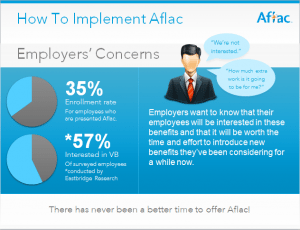We’ve previously discussed how the numbers one to five can make your business pitch decks count. This was based off keynote speaker Stephen Boyd’s tips to create a presentation countdown. With our own take on it, let’s continue counting from number six to number ten.
6. Presenting after SIX o’clock P.M.
Business professionals work eight hours on a regular basis. After a long day, only a few stay later than six o’clock p.m. to polish their paperwork, web designs, pitch deck slides, and the like. After all, we want to get back to our families and our lives, right?
Deliver your pitches as if you’re doing them after six in the evening. Embody the elements of fun, involvement, and learning to keep your audience awake. Treat your audience like close friends and family you’ve been longing to see. Sustain their interest from the beginning to end, no matter how late it is.
7. Seven Means Complete
According to the Bible, the number seven has three Hebrew roots: saba, shaba and sheba. These three biblical ideas are associated with oaths, perfection, and completeness. Whether you’re delivering a pitch to a potential client or discoursing a monthly report with co-workers, your pitch deck should contain complete data.
Providing evidence supports your argument or main idea. Maximize the use of graphs and charts, statistics, and other visuals for a more comprehensive discussion. Inevitably, your audience will have questions or clarifications which you can tackle in a Q&A session. However, it pays to address all of these possible questions from the beginning to make things easier for everyone.
8. Eight for Affinity
The number eight is drawn with two interconnecting circles. Lacking one circle, either at the top or at the bottom, means you have zero. Pitches are about making connections. Your business speech is useless without an audience.
Command interest by connecting with them on a personal level. You can best engage an audience by exuding a credible aura, by appealing to their emotions, or by challenging their intellect. Building networks after your business pitch is another way to solidify your core message, and get viable results as well.
9. Nine for Anticipation
Where there’s nine, an end is anticipated — nine is followed by ten, ninety-nine makes way for one hundred, and so on. Anticipating unforeseeable circumstances in your talk is a good pitching skill. Don’t make your audience tune out because you panicked or lost your train of thought. Always be prepared for whatever can go wrong in a speaking engagement.
Planning ahead increases your chances of foreseeing or dealing with such problems.
10. Perfect Ten
There’s no denying that the number ten connotes perfection. Ten is a rounded number, which is why our counting system is based on the power of ten. We rate things with one being the lowest and ten being the highest. Striving for perfection is the best mindset for succeeding in your business pitch.
Make sure that your pitch deck design has the perfect font combo and title slide. Reinforce it with confident delivery and compelling content. Always aim for a deck that will get a perfect ten rating.
To Sum It Up
Use numbers six to ten as your guide for delivering fun, complete, engaging, planned, and perfect business pitch decks. Remember the importance of connecting to your audience, sharing complete and pertinent data, appealing to emotions, anticipating crises, and striving for perfection.
Need a pitch deck to give you an edge? Check out our portfolio for inspiration, or contact our slide design experts for a free quote.
References
Boyd, Stephen. “Public Speaking By Numbers.” Speaking-Tips, August 17, 2011. Accessed June 10, 2015.










 Who better to give advice for an angel investment pitch, than an angel investor himself? Edward Harley, Angel Investor and member of the Keiretsu Forum, lays out exactly what you need to do to become part of the “top 5% of all presenters.” Though his context lies in the world of investor pitches, his advice is true and useful for anybody presenting about any subject.
Who better to give advice for an angel investment pitch, than an angel investor himself? Edward Harley, Angel Investor and member of the Keiretsu Forum, lays out exactly what you need to do to become part of the “top 5% of all presenters.” Though his context lies in the world of investor pitches, his advice is true and useful for anybody presenting about any subject.






